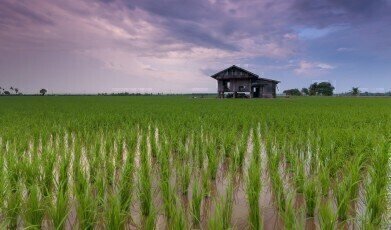Water/Wastewater
What Are Flood-Resistant Crops?
Oct 03 2020
By 2050, the world’s population is expected to reach almost 10 billion people. Feeding all those extra mouths will require a significant increase in the world’s agricultural output. However, unless drastic action is taken to reduce our emissions and mitigate the worst effects of climate change, the conditions for cultivating crops are only likely to be less conducive to achieving expected yields.
Chief among these problems is an increased incidence of flooding over recent years. When farmlands become flooded, the crops planted on them struggle to gain enough oxygen to thrive, resulting in reduced yields and, in the most severe scenarios, the total destruction of the field. In order to combat that possibility, the scientific community has been investigating the molecular structure of certain plant enzymes, in the hope that they can genetically engineer them to be more resistant to flooding.
A delicate balancing act
The agriculture-water interface is critical to the environment and to the well-being of the crops involved. Water is a scarce resource and agriculture is often scapegoated for consuming vast quantities of the stuff, but too little of it can contribute to lower yields and higher risks of food insecurity. On the other hand, too much water in the shape of floods can completely destroy agricultural operations as the crops become overwhelmed by an excess of water and a lack of oxygen.
These floods have become increasingly commonplace in recent years. Brought on by extreme weather events, they have experienced greater frequency due to the worsening problems of global warming and climate change, which make it more likely that rivers and lakes will break their banks or that farmlands will become waterlogged. Of course, monitoring must play a key role in natural flood management, but there is a need to investigate hardier crop strains which are capable of withstanding excessive amounts of precipitation in order to avoid the worst effects of food poverty.
Laying the groundwork
With that in mind, a team of researchers from the University of Sydney in Australia have been exploring how staple foods like barley, rice and wheat are able to adapt to survive temporary flood conditions. Chiefly, this is achieved by activating alternative pathways of energy to airflow, which are regulated by oxygen-sensing enzymes within the crops. These are known as Plant Cysteine Oxidases, which control protein stability via the use of oxygen.
Little was known about how PCOs worked until the Australian research painted a more lucid picture of their molecular structure, pinpointing the exact chemical components that are key to the whole process. “The results provide a platform for future efforts to manipulate the enzyme function in an attempt to create flood-resistant crops that can mitigate the impact of extreme weather events,” explained Dr Mark White, co-author on the study.
Digital Edition
IET 34.2 March 2024
April 2024
Gas Detection - Biogas batch fermentation system for laboratory use with automatic gas analysis in real time Water/Wastewater - Upcycling sensors for sustainable nature management - Prist...
View all digital editions
Events
Apr 30 2024 Melbourne, Australia
Apr 30 2024 Birmingham, UK
May 03 2024 Seoul, South Korea
May 05 2024 Seville, Spain
May 06 2024 Minneapolis, MN, USA


















